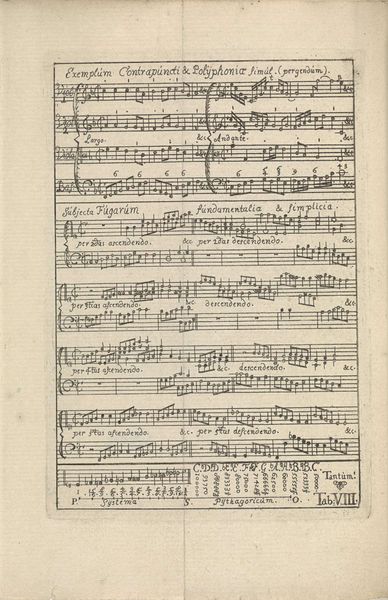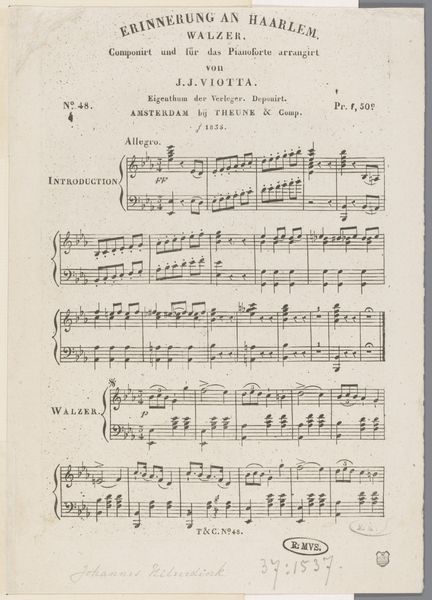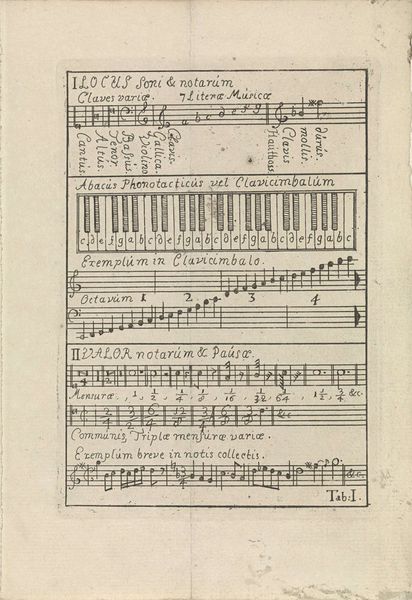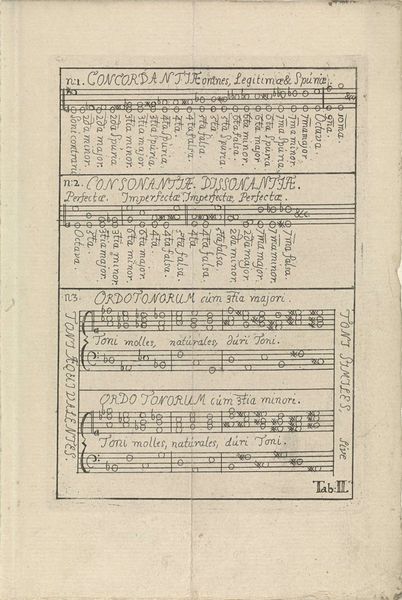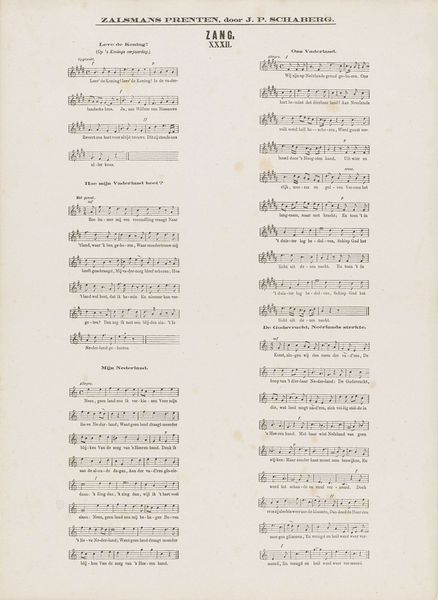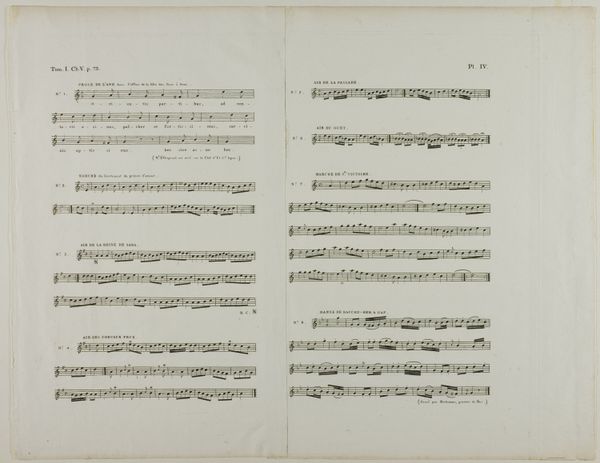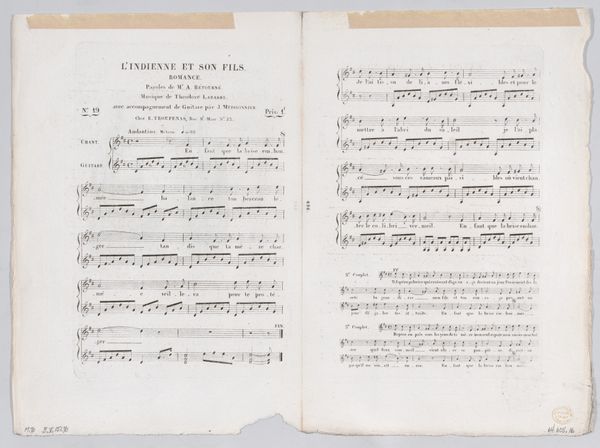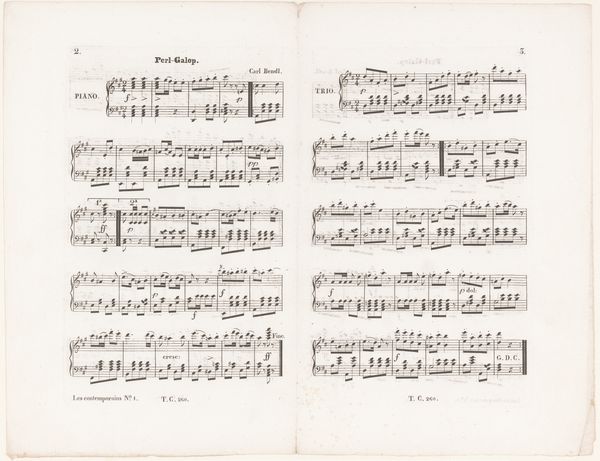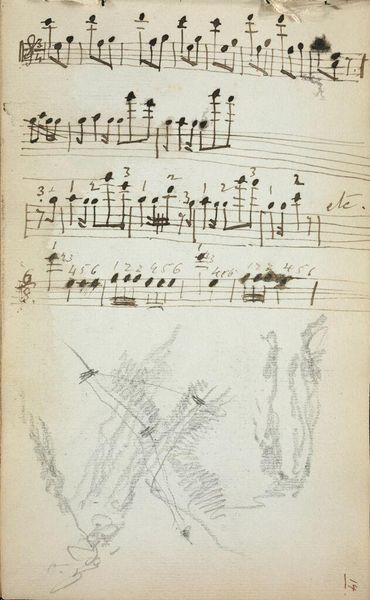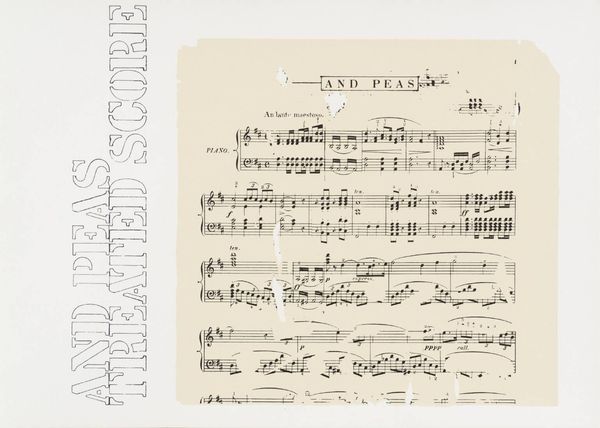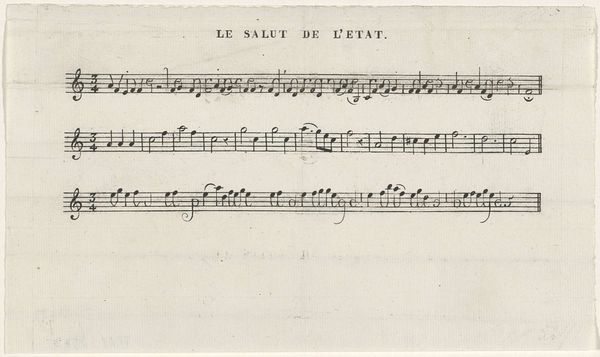
drawing, graphic-art, print, engraving
#
drawing
#
graphic-art
#
baroque
# print
#
form
#
geometric
#
line
#
engraving
Dimensions: height 150 mm, width 103 mm
Copyright: Rijks Museum: Open Domain
Curator: Let’s discuss "Bladmuziek Tab. VII," an engraving by an anonymous artist dating back to 1743. What are your initial thoughts on the piece? Editor: The detail is amazing for such a small, aged thing! Looking closely at this music sheet gives me an intense feeling of order…almost regimented, but the tiny handwritten annotations betray its true nature of craft. I wonder what purpose it originally served? Curator: Notice how the precise engraving emphasizes clarity. The anonymous creator employed stark lines, devoid of extraneous embellishment. The interplay of horizontals forming the staves against the vertical note stems produces a structured visual field. Observe the neat calligraphy adding another layer. Editor: Yes, I'm immediately drawn to the lines that make the staves, precisely etched with tiny deviations and inconsistencies if you look closely. This creates such an impression about process. Engravings such as this weren’t just the pursuit of the highly educated but represented manual skills and meticulous labor. Were these intended for didactic purposes, or perhaps amateur practice? Curator: The visual structure certainly evokes pedagogy. Consider the layout, divided into discrete sections, each presenting a variation or exercise. The systematic arrangement promotes understanding musical form. Even the contrasting tempos "Adagio" and "Allegro" imply musical exercises or studies of these baroque conventions. Editor: So you're seeing an exploration of how something is structured. But I am interested in this relationship to a wider practice, these lines denote not only the visual representation of notation but physical craft, demanding dexterity and sustained attention in this laborious process. This sheet bridges the refined, formal realm of composition with tangible practice. What kind of access was required to make pieces like these? Curator: Your focus certainly draws attention to material conditions shaping its aesthetic. Thinking about semiotics and its context might provide a more full appreciation for the musical thinking prevalent at the time. Editor: Perhaps together we can explore how material means interact with those more purely formal goals. The tension produces unique avenues for exploration. Curator: An appropriate summation, indeed! Let us move on to our next object now with broadened perspective.
Comments
No comments
Be the first to comment and join the conversation on the ultimate creative platform.

